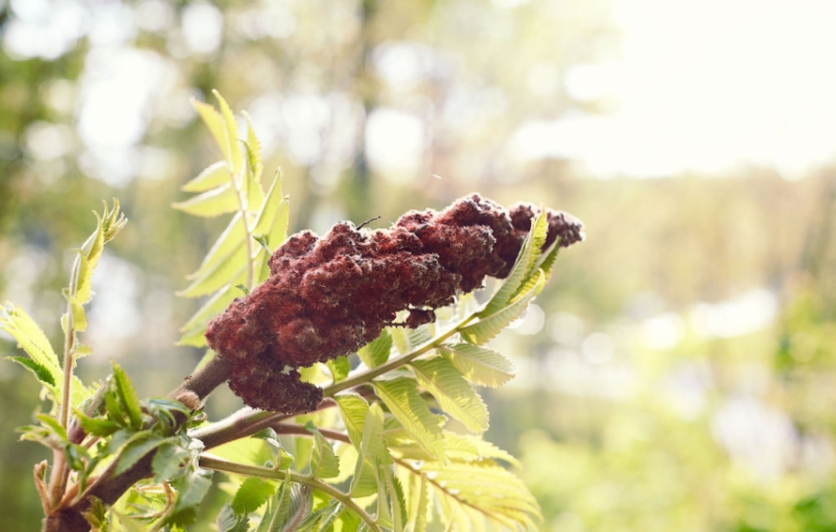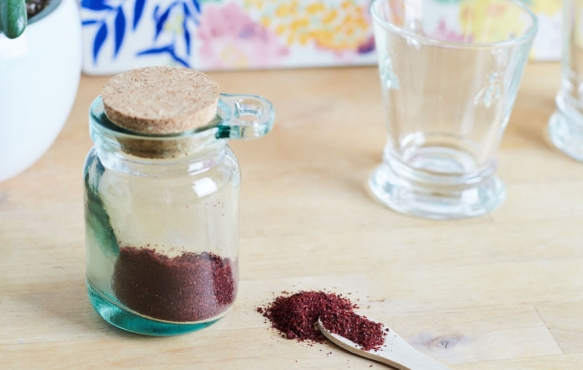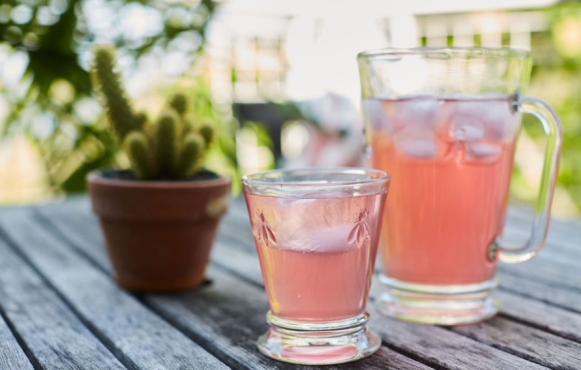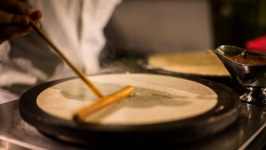A Discovery of Sumac

Vibrant. Tart. Everywhere.
Sumac: It’s a word that sets off flashing red warning signs for many. Bring up sumac in polite company and, invariably, the next words out of someone’s mouth will be “Isn’t that poisonous?”
It’s true—poison sumac certainly is dangerous, as is poison hemlock and deadly nightshade. Wild plants often wear their ability to do harm right out there on their sleeves, as well they should. Understanding which plants (and fungi) can harm you is a crucial part of existing in respectful balance with the natural world.
Even people who have never considered foraging have likely heard the names of a handful of dangerous wild plants. Many of us were warned early on as children, the adults in our lives tattooing the names of these plants on our minds. Poison ivy. Poison oak. We were told never eat wild berries. To stay away from “leaves of three.” This is important foundational knowledge, especially for young explorers whose excitement for discovery can often win out over careful consideration.
But ending one’s learning about wild plants at the “don’t” means missing out on the many beneficial and delicious edible and medicinal plants that exist all around us.
Staghorn sumac is one such plant. Beautiful, easily identified and, with only a small amount of research, easily distinguished from its dangerous cousin. Nearly all of us in the Northeastern United States have walked, biked or driven past massive stands of the shrub, likely without ever taking note. The tall plants, their trademark vibrant crimson berry clusters that grow upright (like showy pink unicorn horns), appear en masse along roadsides, walking paths and train tracks. Looking nothing like their poisonous, infamous relative, the bright berry clusters—which many mistake for flowers due to their color and the fuzzy hairs that cover each small berry—are the part of staghorn sumac we are looking to harvest during warm months. Poison sumac on the other hand, which causes a painful skin rash upon contact, has downward hanging whiteish berry clusters that more closely resemble a tiny bunch of grapes.
Staghorn sumac berries are a summer harvest item I look toward with anticipation each year. Prolific, hearty and tart, the crimson berry clusters are a versatile ingredient in your fridge and your cupboard. For fans of Middle Eastern food, that sour sumac flavor has almost certainly been enjoyed dried in the common spice mix za’atar, which combines dried sumac, ground sesame seeds and a variety of herbs, including thyme and oregano. The sumac used in za’atar, while not our native staghorn sumac, is a very close relative. Drying staghorn sumac berries in a dehydrator, grinding them up and sifting out the fine hairs through cheesecloth gives you a similar tart product. I use dried sumac in hefty quantities alongside mint in a ground meat and rice dish eaten with plain yogurt. I also throw a bit of ground sumac powder into my homemade meat stock while it simmers, adding an extra level of flavor.
The simplest way to use sumac berries is by steeping them into a cold infusion, or tisane, often referred to as “sumac-ade” (though I find it tastes more like a slightly tart tea than it does like lemonade). Make a sumac infusion by breaking the berries off of their central stalks and placing them in cold water. Avoid hot water, as it will make your tea bitter and unpalatable. Agitate the berries and let them sit for 30 minutes until the water turns a lovely pinkish color and is tart to the taste. Strain the mixture through cheesecloth, removing the fine hairs that coat the berries, and your infusion is ready.
Refreshing sumac-ade can be enjoyed iced on hot summer days either with sweetener added or without. While delicious on its own, I like to turn my sumac-ade into a fridge-syrup with the addition of sour rhubarb and sugar, resulting in an end-product that is reminiscent of an Arnold Palmer, or what I grew up calling a half-and-half. The syrup is a great addition to mixed cocktails, or simply stir a bit into sparkling water for a refreshing spritzer. Sumac rhubarb syrup is also delicious on pancakes, waffles or atop ice cream. And, as with many forageable foods, preparing your harvest as a syrup greatly extends the shelf life of a plant with a limited season. I often have summery sumac syrup in my refrigerator throughout the coldest winter months, alongside autumnal crabapple syrup and springtime daylily pickles.
Delicious, easy to identify and simple to use, staghorn sumac proves that building a strong foundational knowledge of wild plants doesn’t just yield continuous benefits in your kitchen, it also changes the way you observe and interact with the outdoors. Staghorn sumac isn’t just prolific, its Seussian berry clusters and lush foliage are truly beautiful. So once you spy that stand growing alongside your neighborhood lane, before setting out to collect your harvest, take a moment and simply enjoy the view.
*Note: Collect staghorn sumac from areas unlikely to be treated with pesticides or other chemicals. As with all foraging, you should refer to field guides and experts for 100% positive identification (paying particular attention to potential lookalikes) before consumption. Additionally, consult with a doctor if you have any questions or concerns about specific health issues, medication interactions, allergies, pregnancy or breastfeeding.







